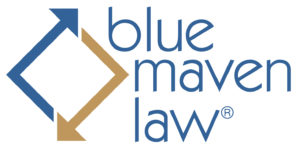Semi-Materials Co., Inc. v. MEMC Electronic Materials, Inc.
MEMC manufactures polysilicon, which is used to manufacture semiconductor chips and solar cells. Starting in 1996 MEMC’s wholly-owned subsidiary MEMC Pasadena, Inc. entered into informal, short-term arrangements with Semi-Materials’ predecessor-in-interest to help MEMC Pasadena sell silicon, and later silane gas, in South Korea in exchange for sales commissions.
In 2003 Semi-Materials and MEMC Pasadena entered into an agreement whereby Semi-Materials was appointed MEMC Pasadena’s exclusive sales representative for the sale of polysilicon and silane gas in South Korea. Under the agreement MEMC Pasadena would pay Semi-Materials a commission on all polysilicon and silane gas sales that were “purchased from [MEMC Pasadena] by the user of the PRODUCTS and delivered by [MEMC Pasadena] to a site within [Korea]” according to the compensation percentage rates listed in Appendix A.
Semi-Materials was to solicit and promote sales of the products, but not consummate sales. The sales contracts were to be between MEMC Pasadena and the buyers of its products. MEMC Pasadena entered into a similar agreement in 2004 with a subsidiary of Semi-Materials for the sale of polysilicon and silane gas in China. Both contracts were signed on behalf of MEMC Pasadena by Mr. Lahoti, a marketing and sales manager.
The Procedural History
The plaintiffs filed suit in the United States District Court for the Eastern District of Missouri in 2008, alleging breach of contract, tortious interference with contract, and tortious interference with a business expectancy. Upon the defendant’ motion, the district court granted partial summary judgment, limiting the plaintiffs’ claims. The remaining claims were tried before a jury, which returned a verdict for Semi-Materials. MEMC moved for judgment as a matter of law, and the district court denied the motion. MEMC appealed that denial, and Semi-Materials appealed the district court’s grant of partial summary judgment in favor of MEMC.
Did Semi-Materials Earn a Commission on Products Delivered Ex Works and Free Carrier?
Many of the contracts between MEMC and its customers for polysilicon and silane gas product contained “ex works” or “free carrier” delivery terms, which meant that MEMC “delivered” the products under the contracts at a location in the U.S. MEMC argued that those products were not delivered “to a site within [South Korea/China],” such that Semi-Materials wasn’t eligible for a commission.
The district court agreed with MEMC, finding that the sales representation agreements were not ambiguous and refusing to consider extrinsic evidence. The United States Court of Appeals for the Eighth Circuit disagreed, holding that “Semi-Materials’ argument that the ‘delivered by’ language equates to consummation of a sale between MEMC and a buyer in either China or South Korea is also reasonable, and it is perhaps the better interpretation considering the overall purpose of the Agreements and the course of dealings between MEMC and Semi-Materials.” The Eighth Circuit noted that MEMC’s interpretation of the contract would allow it to avoid paying commissions to Semi-Materials simply by using a delivery term in its customer contracts which provided that “delivery” is accomplished inside the U.S. The Eighth Circuit held that the contract was ambiguous because it was subject to more than one reasonable interpretation, reversed the district court’s grant of partial summary judgment, and remanded the case.
Did Mr. Lahoti Have Apparent Authority to Bind MEMC Pasadena?
Before the trial court the plaintiffs had argued that Mr. Lahoti had apparent authority to enter into the sales representation agreements on behalf of MEMC Pasadena. Quoting a Texas appellate decision (the contracts were governed by Texas law), the district court noted, “Apparent authority arises through acts of participation, knowledge or acquiescence by the principal that clothes the agent with the indicia of apparent authority.”
The district court had denied the defendants’ motion for summary judgment, finding that there was a genuine issue of material fact whether Mr. Lahoti had sufficient apparent authority for Semi-Materials to rely on in entering into the contracts on behalf of MEMC Pasadena, when:
- MEMC had paid commissions over the course of several years for the sale of polysilicon and silane gas in Korea and China;
- Mr. Lahoti was the primary (if not the sole) person at MEMC who had direct contact with customers interested in purchasing polysilicon and silane gas; and
- Semi-Materials had worked with MEMC Pasadena’s sales managers for several years before the sales representation agreements were signed, and had been paid commissions for the sales.
MEMC claimed not to have known about the two sales representation agreements until 2007 when Semi-Material’s counsel sent copies of the two contracts on the eve of a mediation in an unrelated lawsuit between MEMC and Semi-Materials. Nonetheless, the Eighth Circuit affirmed the district court’s ruling denying MEMC’s motion for judgment as a matter of law.
Did Semi-Materials Breach Its Contracts by Failing to Provide Reports?
MEMC also argued that Semi-Materials and its affiliate had breached the sales representation agreements by failing to provide written reports as required under the contracts, but the court found that the defendants produced sufficient evidence at trial to support the jury’s finding that Semi-Materials performed its reporting obligations under the agreements. The Eighth Circuit agreed and affirmed the district court’s ruling.
Kreisler & Kreisler, LLC v. National City Bank
In this case, the courts considered whether the words “per annum” rendered an interest rate provision in a promissory note ambiguous when interest was calculated on a 365/360 basis, by which interest is computed by multiplying the interest rate by the number of days in the computation period and dividing by 360. The plaintiffs argued that because a year contains more than 360 days, the provision was ambiguous. The district court disagreed and the Eighth Circuit affirmed, stating:
The payment provision of the promissory note clearly sets out the time factor and the method for calculating interest, which the Bank followed. The description of the annual interest rate is comprised of two independent clauses. The first states that “annual interest rate for the Note is computed on a 365/360 basis.” The second clause specifies exactly how a “365/360 basis” works: by calculating a daily rate using the annual rate divided by a 360 day year and then multiplying the daily rate by the number of days the balance was outstanding and by the balance itself.

